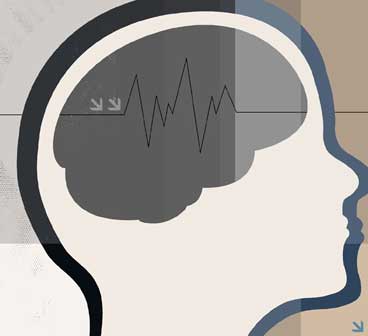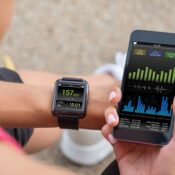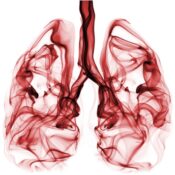Surviving a stroke by recognizing its symptoms and getting care quickly is of course critical to stroke recovery. But it is only the first step. Today, promising new therapies are giving stroke victims the tools and technology they need to recover—and reclaim—their lives.
In this two-part series, we offer exclusive online information about stroke symptoms, risk factors, treatments, and rehabilitation strategies to accompany the May 2010 Post Investigates feature: “Stroke Advances,” in which researchers tap into the brain’s remarkable ability to rewire itself, by Anne Underwood.
First Things First
Remember that strokes strike quickly, and you should, too. If you think someone may be having a stroke, think F-A-S-T:
F = FACE
Ask the person to smile. Does one side of the face droop?
A = ARMS
Ask the person to raise both arms. Does one arm drift downward?
S = SPEECH
Ask the person to repeat a simple phrase. Does the speech sound slurred or strange?
T = TIME
If the person shows any of these symptoms, time is important. Call 911 or get to the hospital fast. Brain cells are dying.
According to the National Stroke Association, a stroke occurs when a blood vessel breaks (called a hemorrhagic stroke) or a clot in a blood vessel that leads to the brain eventually becomes lodged and blocks blood flow to the brain (an ischemic stroke). Stroke symptoms can come and go as damage progresses, and may be difficult to recognize.
“This is the time when you need to be aware of specific stroke symptoms. Watch for them in loved ones especially, because they can be hard to notice in yourself,” advises Dr. Mateo Dayo of the Venice-Ocala Heart Institute.
Women at Risk
Stroke statistics for women are alarming. While many think of stroke as a man’s disease, women are more likely than men to suffer a disabling stroke, and, sadly, to die from it. In fact, strokes pose a greater threat to women’s health than breast cancer.
A unique set of risks—including hormones (related to birth control pills and hormone replacement therapy), migraines, and pregnancy—put women at special stroke risk.
Lack of awareness also plays a role. In a recent survey, 40 percent of women said they were only somewhat or not at all concerned about having a stroke in their lifetime.
Yet another challenge is that stroke symptoms in women may differ from those that men typically experience.
Common warning signs of stroke include: sudden numbness or weakness, especially on one side of the body; confusion and trouble speaking or understanding; trouble seeing in one or both eyes; trouble walking, dizziness, and loss of balance or coordination; and severe headache with no known cause.
But women may experience sudden face and limb pain, hiccups, nausea, general weakness, chest pain, shortness of breath, and palpitations, according to American Stroke Association experts.
Health professionals are aware of these differences. Unfortunately, many stroke victims and their loved ones aren’t.
“Women experience 60 percent more stroke deaths than men every year,” Dr. Dayo says. “That’s why it is so important for women to be aware of any changes in their body’s normal functions. Call 911 and remember when symptoms first appeared so early medical action can be taken.”
Plan Now For ER Stroke Care
Timely treatment with the clot-busting drug tPa (tissue plasminogen activator) at a hospital certified as a primary stroke center can help the 85 percent of patients whose strokes are caused by clots in the brain.
“Sadly,” says Dr. Ralph Sacco, a neurologist and president of the American Heart Association (of which the American Stroke Association is a division) in the May 2010 Post article, “only about 5 percent of patients actually get it because they don’t reach the hospital in time or they don’t go to a primary stroke center, which can give it rapidly.”
Six out of 10 Americans don’t know where stroke-certified hospitals are in their communities. To find stroke care near you, click here http://maps.heart.org/quality/ for a stroke Web mapping site from the American Heart Association and enter your address or zip code.
Care from a Distance
About 80 percent of Americans live within 60 minutes of a primary stroke center.
But, if you are not one of them, try searching for a nearby hospital that is equipped with a sophisticated telecommunications link to a specialized stroke center.
Such collaborations, called stroke “systems of care,” enable physicians in suburban and rural areas to provide fast and coordinated treatment and are gradually emerging across the country.
St. Luke’s Episcopal Health System in Houston, Texas, recently implemented a stroke system of care with the help of GE Healthcare.
“The minutes and hours following the initial onset of stroke symptoms are very critical to a patient’s outcome or survival. However, most often strokes don’t happen in the lobby of St. Luke’s,” said Connie Boyd, Service Line Director of Neuroscience and leader of the System of Care project within St. Luke’s. “Working with GE Healthcare, we realized that establishing relationships with community hospitals, some of which may even be considered competitive, was key to extending the reach of our stroke care capabilities and ultimately improving patient outcomes.”
Leslie Welborn and his wife, Ann, are grateful for the innovative approach to stroke care.
After her husband suffered a stroke in January, Ann took him to their local hospital, St. Elizabeth’s, which is located about three hours from Houston. Fortunately, the facility was involved in the St. Luke’s system of care.
Guidance from the experts in Houston enabled local physicians to quickly treat Welborn with tPA, dissolving the clot that was causing his stroke and buying much-needed time to transport him safely to St. Luke’s for surgery.
Less than one week later, Leslie returned home. “I can’t believe how well he is doing,” reports Ann—thanks to a system of collaborative care that stroke experts hope will help save countless lives.
Coming in Part 2: Promising new rehab methods help stroke survivors reclaim their lives.
Become a Saturday Evening Post member and enjoy unlimited access. Subscribe now




Comments
what mistakes, i think you done fine, i had a stroke in 78 ,i belive it was ,i was wiith a nurse that i had been dateing, she took real good care of me. we was in the middle of a flu epidemic, she couldn’t get me in hospital . so she took care of me …
three weeks later i was able to go back to work. i’m lucky i guess….gene
I did not know about stroke’s greater statistical risk to women.
Good luck and good health, Virginia Long. Better yet, God be with you.
Excuse my mistakes. virginia long
About 11 yrs ago, I had a TIA,had been to my Dr 3 times in one week, on Sat.my daughter phoned me, stated that she could not understand one
work I was sayin, She then talked my husband in to taking me to my Dr.
Thankfully,because my husband was worried, he saw me,(This was my
Dr brother)He put me in hospital, still sayig it was not a stroke.My daughter
even said to the nurse at hopital she thot I was having a stroke. Still no one
thot so.That was a Sat. Mon morning I guess someone was watching over
me,they sent my by :Life Flight to MCO in Toledo,OH. I came thrr this and
have not had TOO MANY problems BUT MY DR DID NOT KNOW WHAT
A STROKE WAS>My Dr there said it was answer to prayer that I made it
and now it has been 11 yrs. I still have some problems but nothing I cannot
handle. I go to a stroke clinic each 6 months.The Dr that did not know I was
having a stroke now has a large building with several other Dr. I only hope
and pray he now knows what a stroke is. Every Dr studying should be
aware of the symptoms BEFORE they graduate. Thankfully, my daughter,
who is not a nurse, insisted to my husbank to get help.